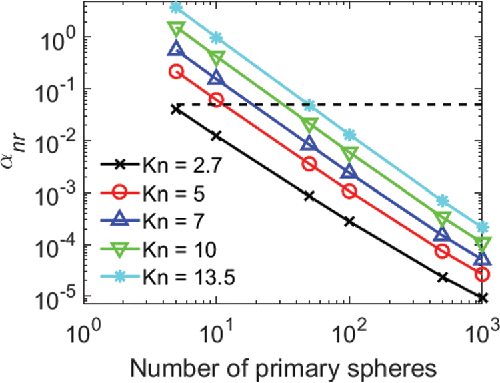Figures & data
Figure 1. Comparison of our calculated orientation-averaged mobilities to experimental data from Li et al. (Citation2016) for mobility diameters of ∼129 nm, ∼154 nm, and ∼200 nm (based on the high-field mobilities). The number of primaries used for the calculations represent the best fits to the data.
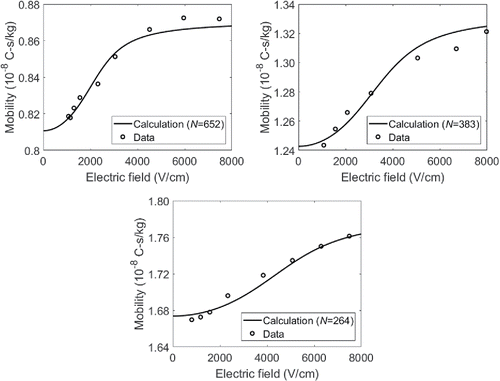
Figure 2. Normalized mobility as a function of electric field strength for 100-sphere (top) and 1000-sphere (bottom) aggregates.
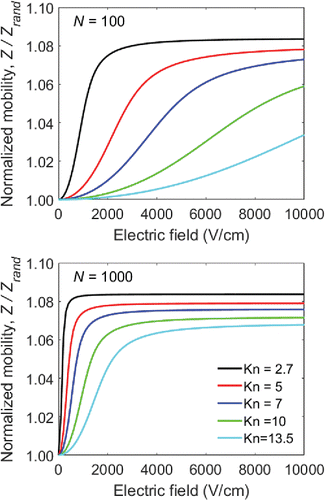
Figure 3. Normalized mobility as a function of electric field strength for aggregates with primary sphere radii of 25 nm (Kn = 2.7, top) and 5 nm (Kn = 13.5, bottom). Note that the N = 100 and N = 1000 curves in this figure correspond to the Kn = 2.7 and Kn = 13.5 curves in .
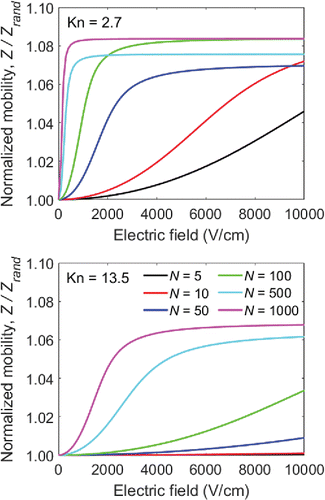
Figure 4. Maximum electric field strength at which particles are randomly oriented, defined as having a mobility within 0.5% of the mobility in the limit of zero-field strength. Note that results are capped at an upper limit of E = 10,000 V/cm.
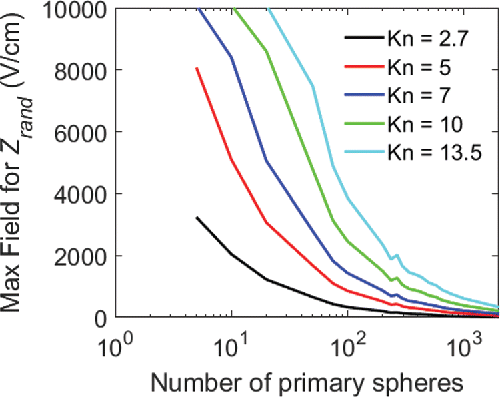
Figure 5. Ratio of fully aligned to random electric mobilities for a wide range of primary sphere Knudsen numbers and the number of primaries. The Kn = 0 and Kn = ∞ curves represent the continuum and free molecular limits, as calculated using the standard KR theory with the RPY tensor (Chen et al. Citation1984) and using a Monte Carlo code (Corson et al. Citation2017c), respectively. Uncertainties of one standard deviation of the mean (based on 20 samples with the same fractal dimension but different morphologies) are shown for the continuum and free molecule results for several N values.
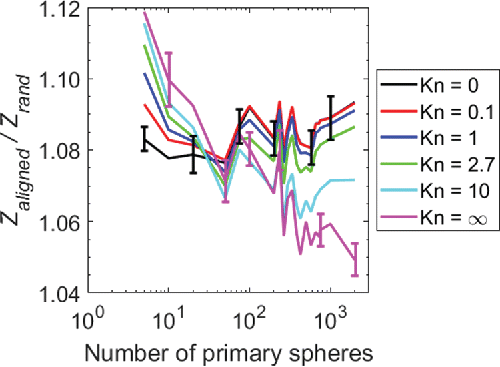
Figure 6. Reduced rotation velocity for a range of primary sphere sizes and Knudsen numbers. Soot density is taken as 2 g/mL, (Dobbins Citation2002; Park et al. Citation2004). Particles with a reduced rotation velocity less than 0.05 (the dotted line) are in the slow rotation limit.
